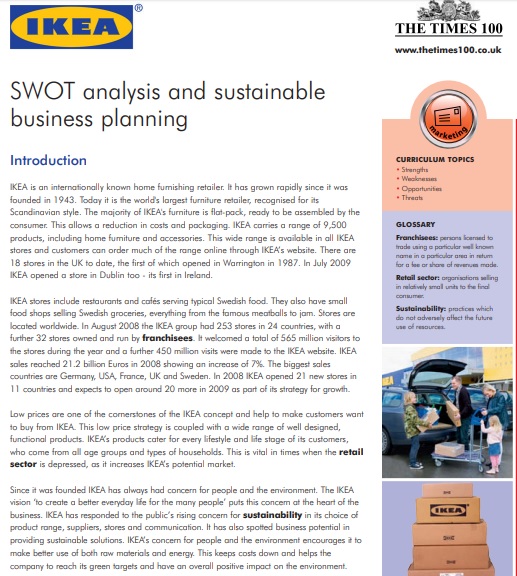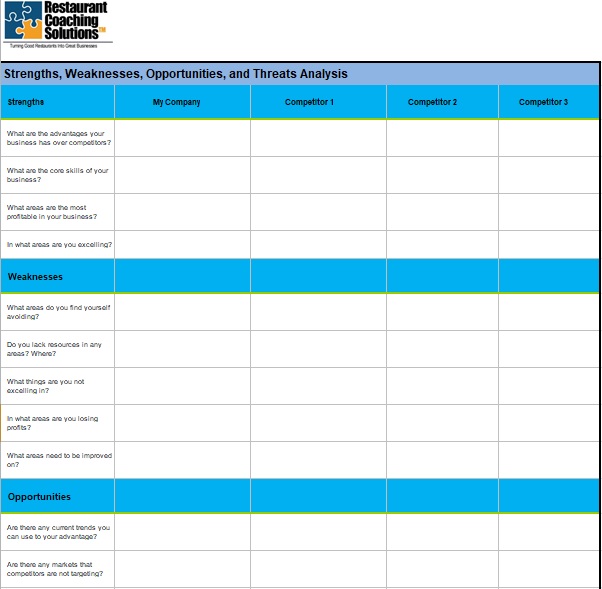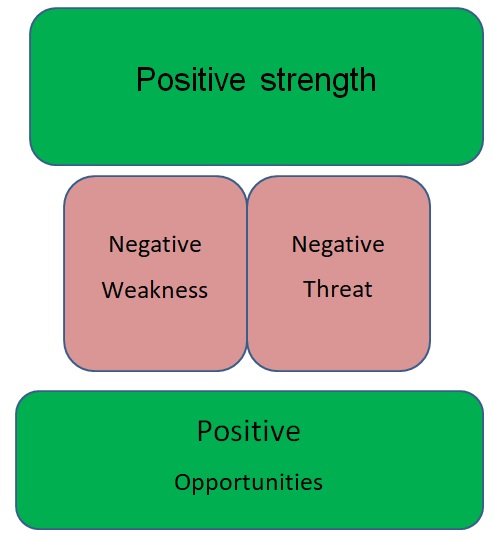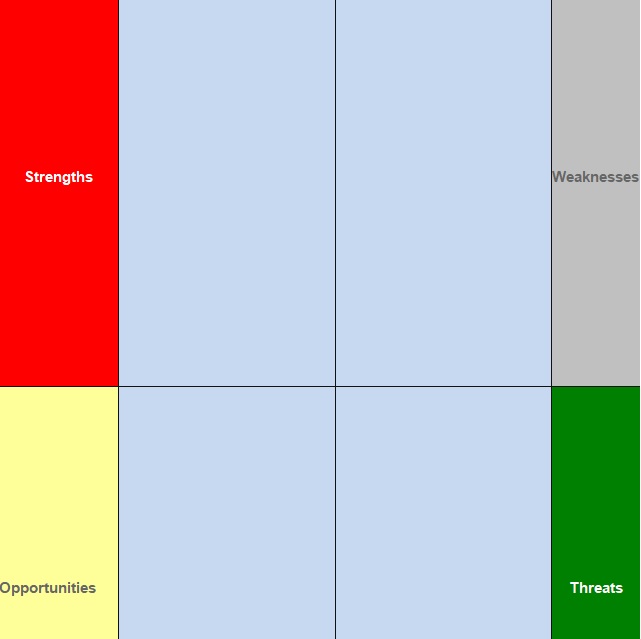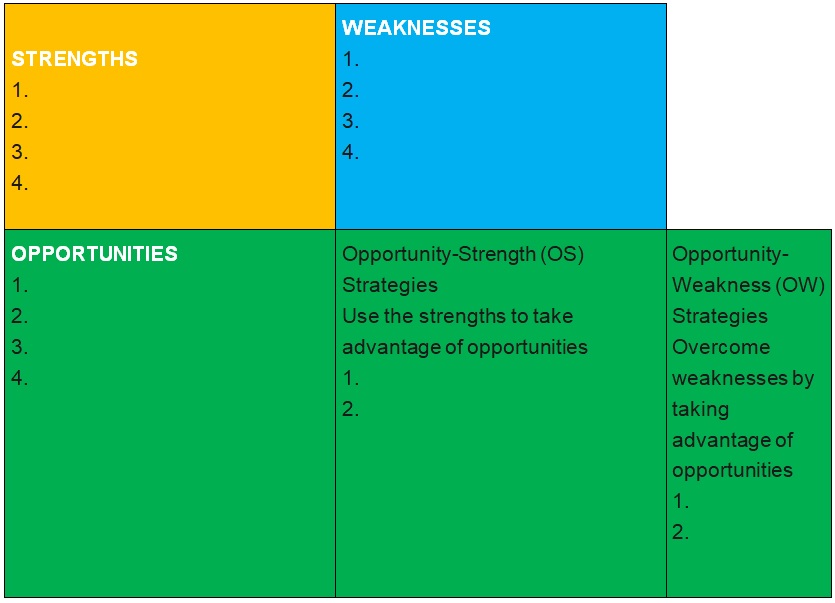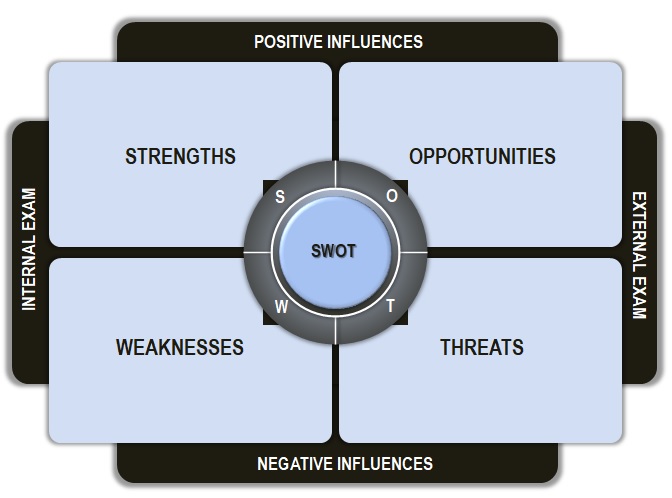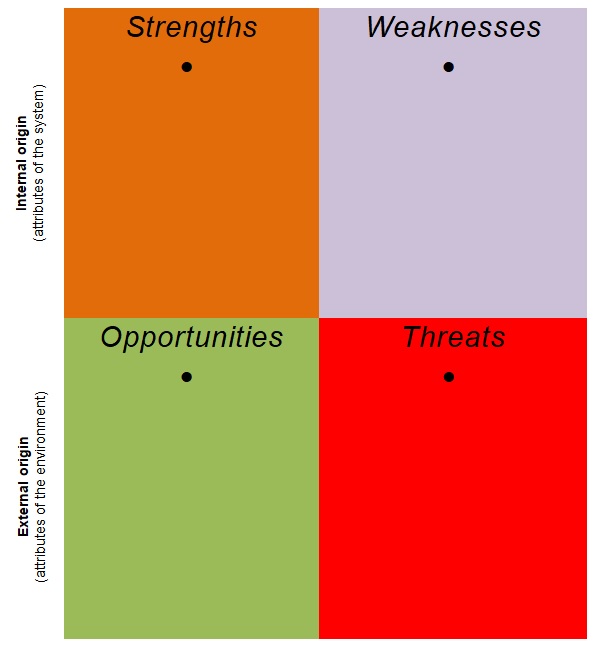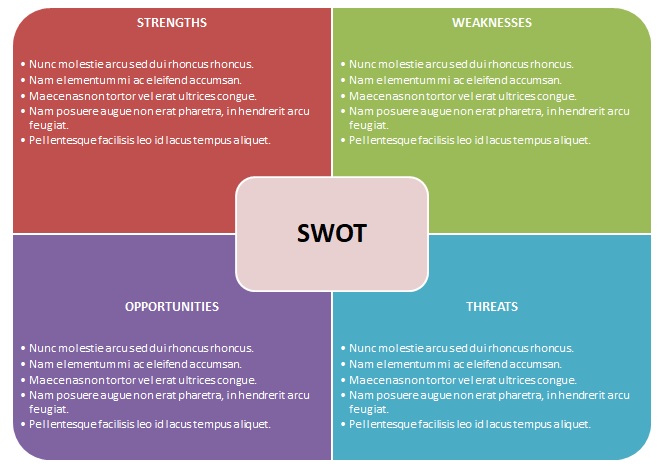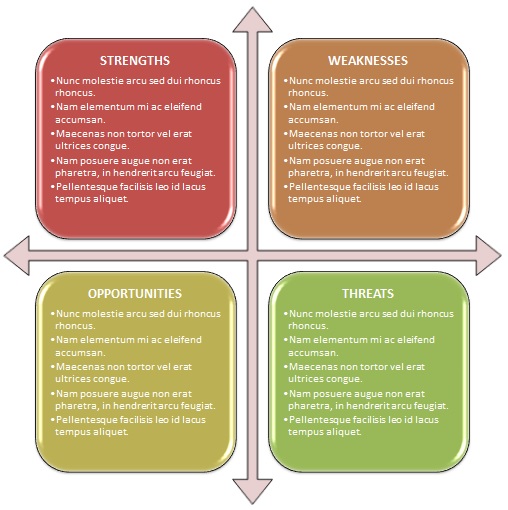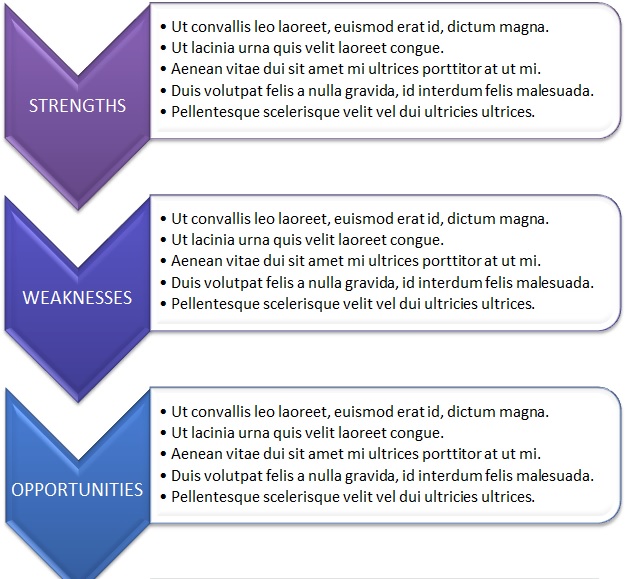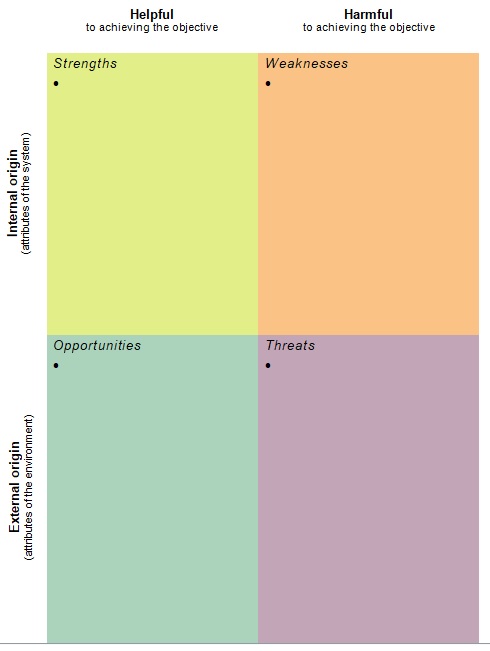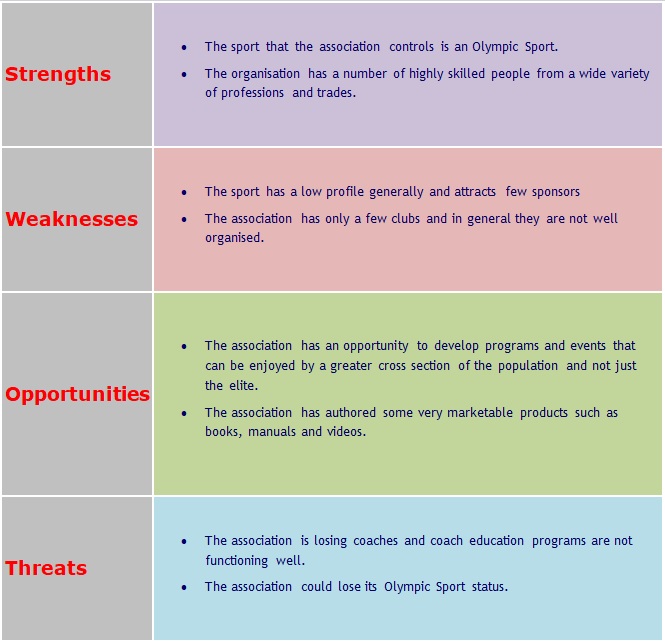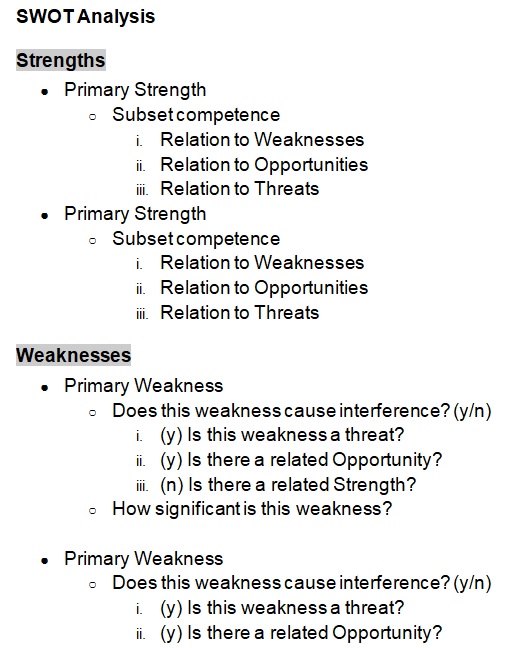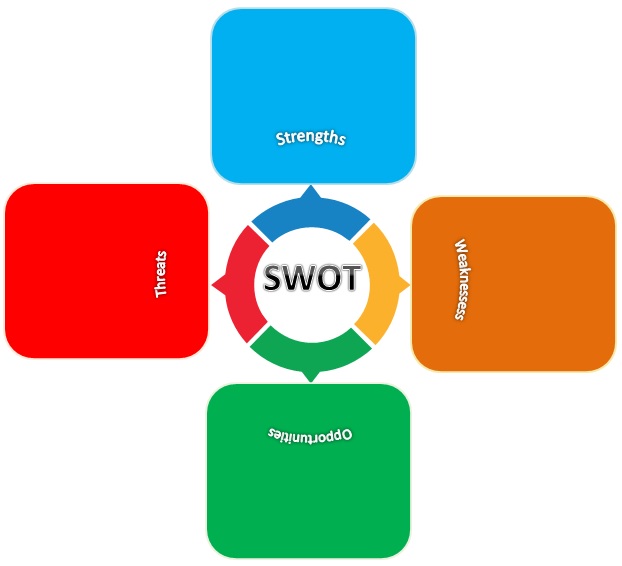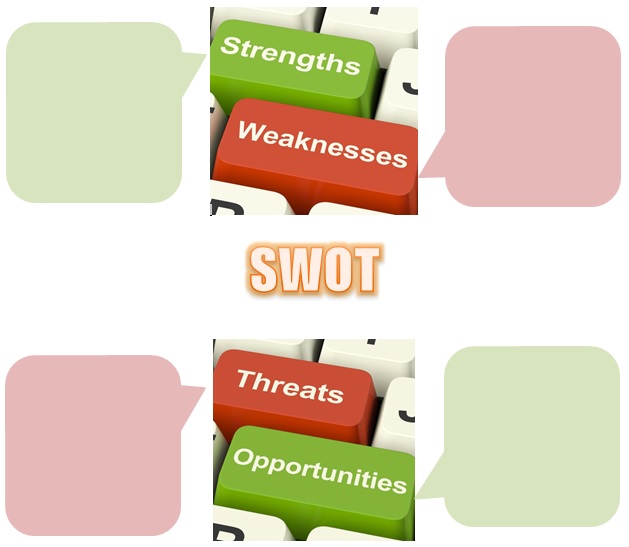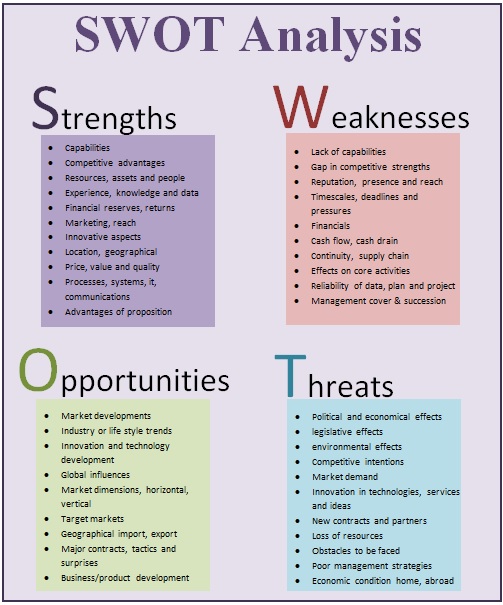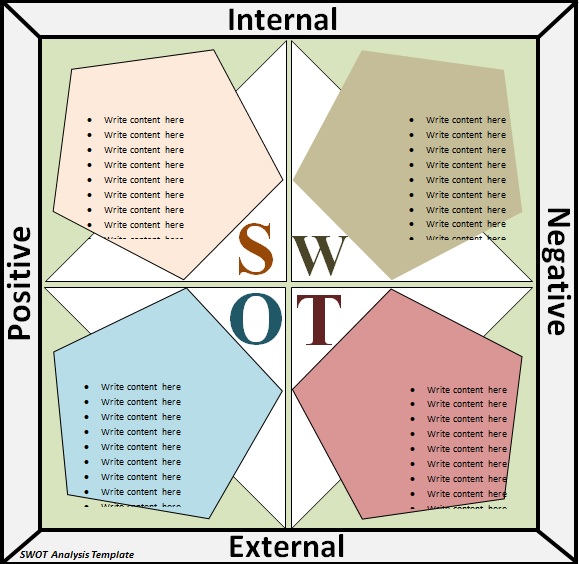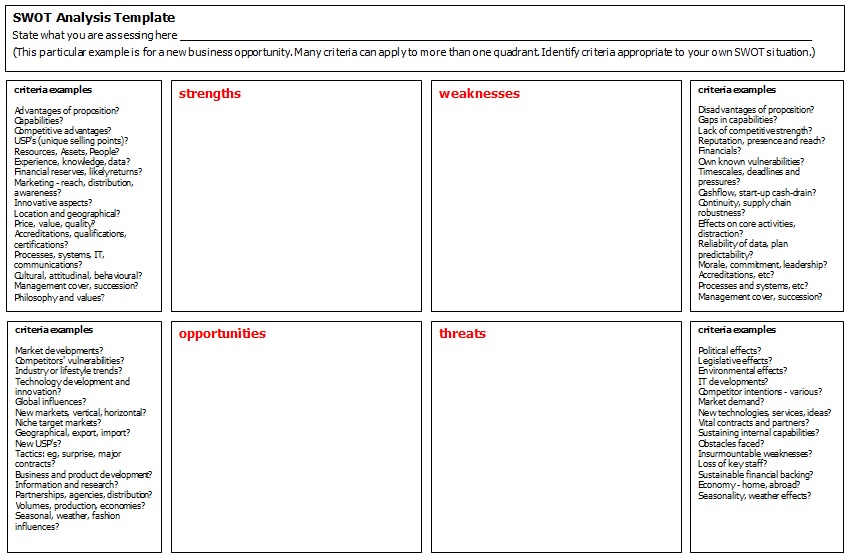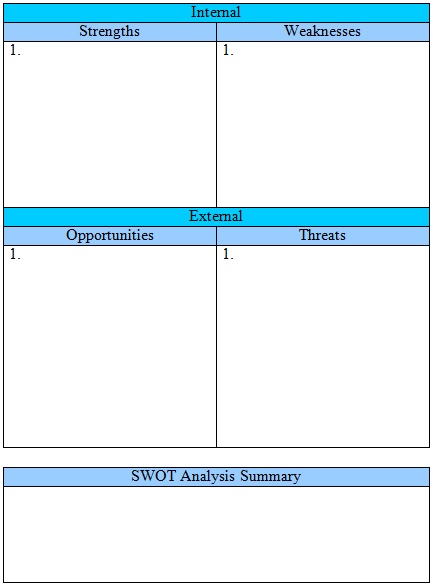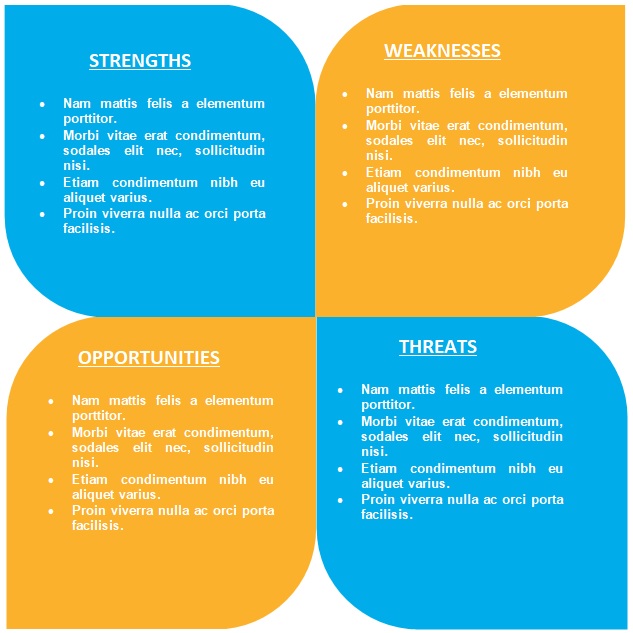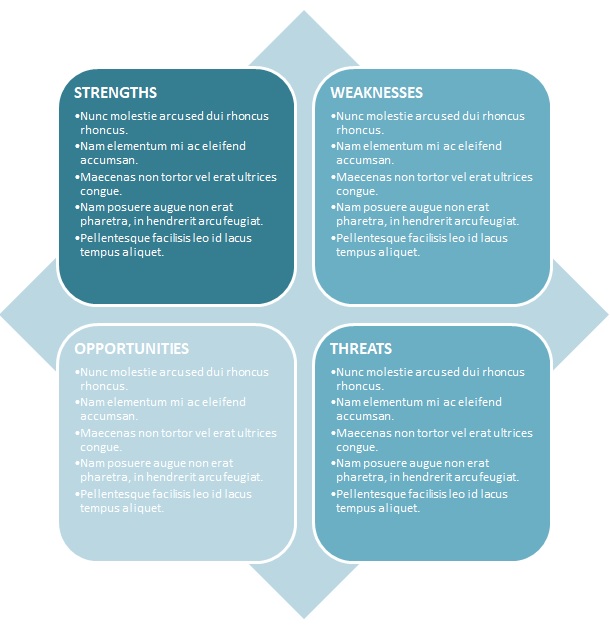Almost every business includes a SWOT analysis template tool in a standard set of company essential analysis tools. It is one of the best tools that is used for multiple reasons in almost all types of businesses.
Usually, every business considers it as a specific tool for their business. However, it fits best for each business to perform a set of analyses. Moreover, the outcomes of SWOT analysis provides such useful information that it can decide about the growth and survival of a business.
In this article, a brief introduction to the SWOT analysis template will be provided. Also, the important, applications, and steps to conduct the analysis will be explained.
SWOT is an acronym of strengths, weaknesses, opportunities, and threats. So, it is used in projects and businesses to find out the strengths, weaknesses, opportunities, and threats.
The application of this analysis can be seen at different stages at different levels of a company. However, the most common use of SWOT analysis is in the gap analysis that assesses, plans, and bridges the gap between the current and desired state of a business.
The project managers and entrepreneurs add the SWOT analysis tool in the starter pack kit. So, the feasibility of a business model or project can be assessed before heading towards implementation. Moreover, it evaluates the business or project and nullifies the likelihood of failure.
Table of Contents
- 1 What is a SWOT analysis?
- 2 Components of SWOT Analysis Template
- 3 Why SWOT analysis is important?
- 4 How do you write a SWOT analysis?
- 5 What do you know about strengths in a SWOT analysis?
- 6 Using a SWOT analysis:
- 7 For what SWOT analysis is used?
- 8 Examples of strengths, weaknesses, opportunities, and threats in a SWOT analysis:
- 9 How do you act on a SWOT analysis?
- 10 Faqs (Frequently Asked Questions)
What is a SWOT analysis?
A SWOT analysis is a strategy that is used by a company or organization to find out and define the Strength, Weakness, Opportunities, and Threats related to business competition or project planning. It may be put in a whole company or organization, or individual projects within a department.
Moreover, SWOT analysis enables you to identify how closely a business is aligned with its growth trajectories.
Components of SWOT Analysis Template
As discussed earlier, the SWOT analysis template is a collection of 4 dimensions of a business. These involve the internal as well as the external analysis. Let briefly discuss each of the factors.
Strengths:
Strengths are the positive attributes of a business that takes part in the growth and success. It is an internal factor that assesses the plus points of a business over its competitors.
Managers can brainstorm to enlist the core competencies of a project or business. It can include both tangible and intangible factors that directly or indirectly take part in business wellbeing
For example, a good technical team, brand loyalty, a unique selling strategy, and technological advantage over the competitor can be referred to as the strengths of a business.
Weaknesses:
Weaknesses are also the internal factors of a business. These are the negative attributes of a business that requires immediate attention and action.
A weakness is any factor of a business that pushes the business toward a decline or a project towards failure.
For example, a shortage of resources, unavailability of the funds, technological deficiency, and clashes between the teams.
Opportunities:
Opportunities are the favorable conditions that take part in the growth and success of a business. Market analysis strategies are useful to find opportunities for business growth.
For example, business interest events, technological up-gradation, brand loyalty, and positive changes.
Threats:
Threats are the external factors that aren’t in the control of businesses. A business can only plan as best as possible to minimize the impact. Therefore, in projects and businesses, the risk management approach is used for the identification, assessment, and mitigation of the risks.
For example, unstable political situation, financial instability, rapidly changing technology, and anything that can jeopardize the success.
Why SWOT analysis is important?
SWOT analysis is a simple but useful tool to study your company’s strengths, weaknesses, opportunities, and threats. It is important for various purposes such as;
- To build on what you do well
- To meet what you are lacking
- To minimize risks
- To get better possible benefits of chances for success.
Moreover, it helps you to understand your competitors. In this way, you can get a way that you require to craft a coherent and successful competitive position. SWOT analysis tells you about the current condition of your organization or company.
How do you write a SWOT analysis?
Here are some steps to write a SWOT analysis;
- First of all, identify the objective. You have to determine a key project or strategy to examine and put it at the top of the page.
- The next step is to create a grid. Make a large box and then divide it into small four squares.
- Then, label each box. Label the top left a box with the word ‘Strengths’, the top right box ‘Weaknesses’, the bottom left box ‘Opportunities’, and the bottom right box ‘Threats’. These are the four titles; you can make them different from the rest of the text by using different colors or font sizes. However, you can also find the SWOT diagram templates online. They will surely make your construction easy and quick.
- After that, add strengths and weaknesses. Here you have to add the factors that affect the project to the relevant boxes. The components of SWOT analysis are either qualitative or anecdotal as well as quantitative and empirical in nature. You should list the factors in bullet form.
- The last step is to draw the final result or conclusion. Examine the completed SWOT diagram. If positive outcomes outweigh the negative, note down it. It helps you to carry out the objective. If you don’t do this, then there is needed to make adjustments.
What do you know about strengths in a SWOT analysis?
In SWOT analysis, strengths are the things that companies certainly do well, or in a way that differentiates you from your competitors. Here you think about the benefits that your company has over the other companies. It will definitely motivate your staff, approach to certain materials, and a strong set of making processes.
However, in SWOT analysis strengths is an integral part. So, you have to determine and analyze your company’s USP (Unique Selling Proposition) and put them into the strengths section.
Hence, we can say that strength is a resource or ability that companies or organizations can use effectively to reach their objectives.
Using a SWOT analysis:
A SWOT analysis can be used to assess and forecast how a single product will play out in the market. You can conduct a SWOT analysis to measure and tackle both big and small challenges. It also lets you know whether to launch a new product to refine your social media strategy or not.
For what SWOT analysis is used?
For many different objectives, you can conduct a SWOT analysis. In conducting an effective SWOT analysis, the first step is to define the objective. The analysis can be used to ensure that the company is aligned with growth goals or to assess individual projects within a single department.
Examples of strengths, weaknesses, opportunities, and threats in a SWOT analysis:
Strengths and weaknesses are internal factors and their examples may include the following;
- Your product patents
- Intellectual property
- Technologies and resources
- Your location
- Your team
These factors also let you know what your team or product does better in comparison to your competitors.
On the other hand, opportunities and risks are external factors as they occur outside of your organization. An example of opportunity is lack a lack of competition in the area or a rising requirement for your product. The two examples of risks are rising material prices and new competitors joining the market.
How do you act on a SWOT analysis?
It is important to execute the findings that you have identified by the analysis. Consider the following steps to put your insights into action;
Take benefit of your strengths
In order to pursue opportunities from your analysis, use your strengths.
Address your weaknesses
You should address your weaknesses and make a strategy to improve them.
Make note of the threats
You can’t control threats as they are often external factors. So, it would be recommended to monitor the threats specified in your SWOT analysis to know their impacts on your business.
Faqs (Frequently Asked Questions)
SWOT analysis allows the business to analyze both internal and external factors. With the help of a SWOT diagram, you get a complete and good understanding of where your business stands within the wider market. Also, it enables them to determine potential opportunities to explore.
After conducting a SWOT analysis and completing the SWOT template, you can use the gathered information to tell your business’ strategic planning.

